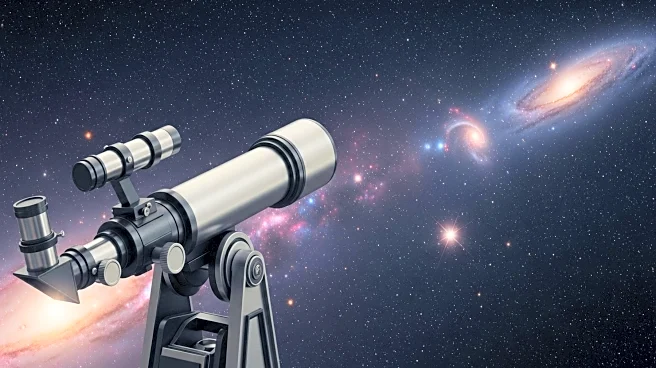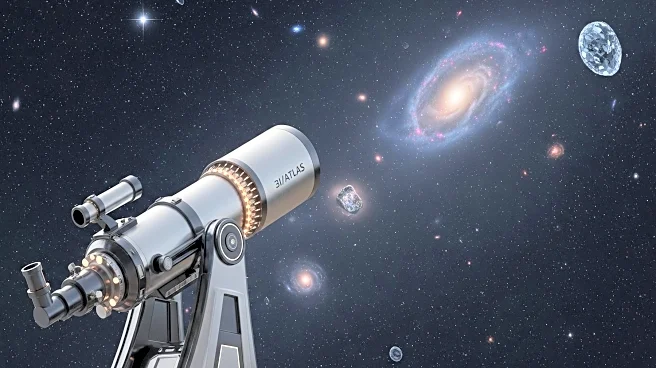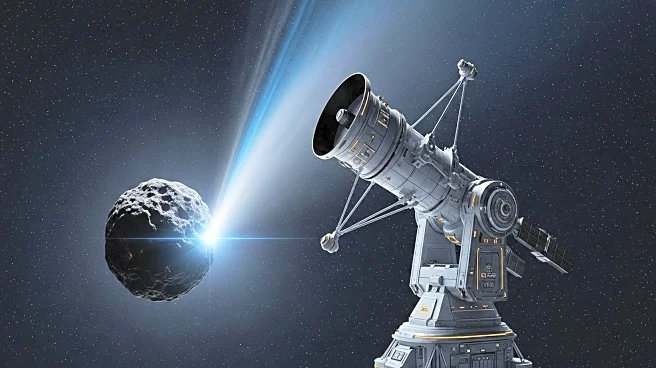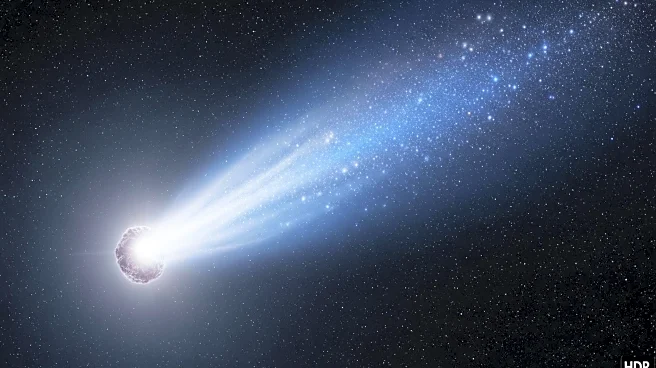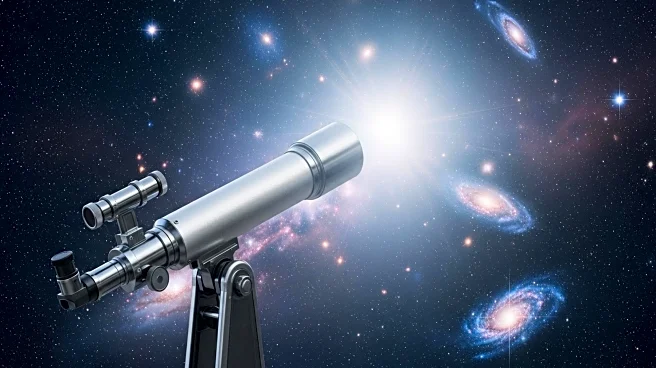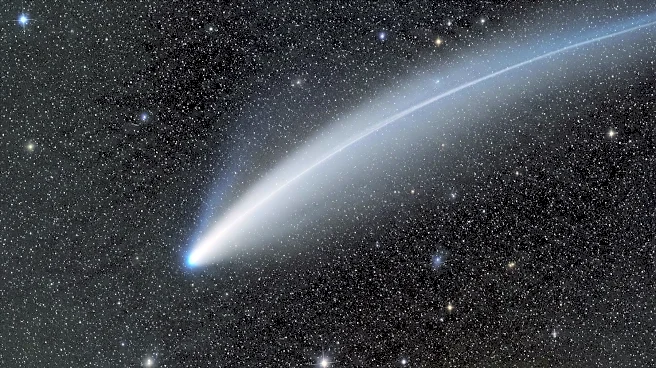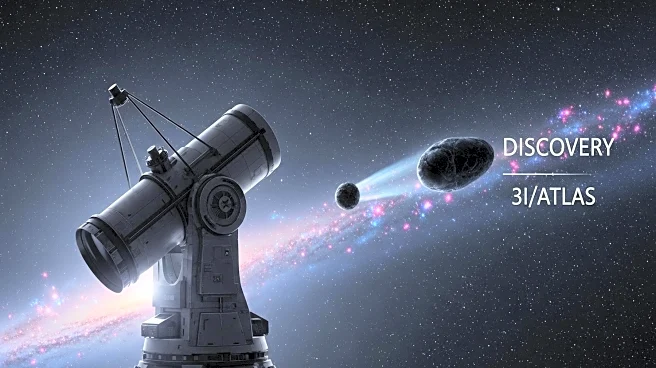What's Happening?
A team of international astronomers, including researchers from the University of Michigan and Michigan State University, have identified a new interstellar object named 3I/ATLAS. This marks the third known interstellar visitor to our solar system. Unlike objects that orbit the sun, interstellar objects originate from outside the solar system and pass through without settling into a stable orbit. The discovery was facilitated by NASA's Asteroid Terrestrial-impact Last Alert System (ATLAS), which uses telescopes in Hawaii, Chile, and South Africa to scan the sky for moving objects. 3I/ATLAS is believed to be a comet, enveloped by a coma of gas and dust, which may reveal its composition as it approaches the sun. Initial observations suggest that 3I/ATLAS is faster, larger, and older than its predecessors, 1I/'Oumuamua and 2I/Borisov.
Why It's Important?
The discovery of 3I/ATLAS provides a rare opportunity for astronomers to study objects from distant parts of the galaxy, potentially offering insights into the formation and evolution of our solar system. Understanding the composition and behavior of interstellar objects can enhance knowledge of galactic dynamics and the processes that govern the movement of celestial bodies. The Vera C. Rubin Observatory, supported by the U.S. National Science Foundation and the U.S. Department of Energy, is expected to find more interstellar objects, which could lead to a more comprehensive understanding of these phenomena. This discovery also underscores the importance of continued investment in astronomical research and technology.
What's Next?
In the coming months, space telescopes like Hubble and JWST will focus on 3I/ATLAS to gather more data on its size, spin, and reaction to solar heating. Researchers aim to detect specific gas emissions to confirm the types of ice present in the comet. As more interstellar objects are discovered, astronomers hope to build a larger sample size to better understand their characteristics and origins. The ongoing study of 3I/ATLAS will contribute to the broader field of astrophysics and may influence future research priorities and funding.
